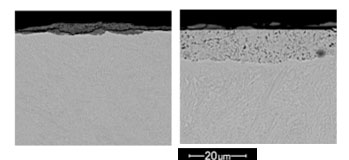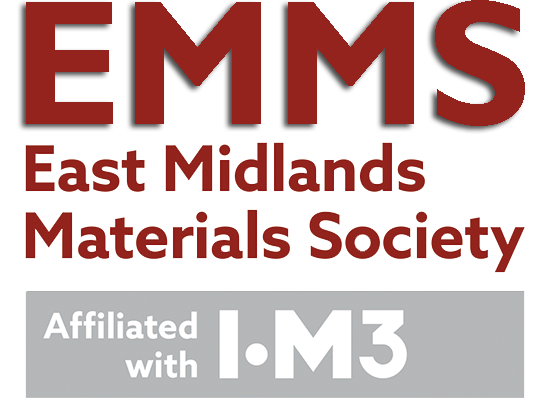Philip Shipway
Faculty of Engineering, University of Nottingham
Synopsis
Wear and subsurface damage in fretting: the key role of debris formation and transport In experimental research, a key aim is to develop a physically-based framework of the processes operating, so that hypotheses developed in the course of such work can be safely extrapolated and generalised. Fretting wear is a complex process which significantly differs from that of sliding wear in that it has a closed contact, but despite this, Archard’s wear equation which is based upon sliding wear is commonly employed to describe fretting wear. Wear rates so derived often show a dependence upon various test parameters (e.g. fretting frequency, fretting displacement, size of fretting contact etc), despite there being no indication in Archard’s equation that these dependencies should exist. Whilst Archard’s equation is commonly employed in fretting research, it has been widely accepted for many years that the wear rate in fretting of non-noble metals in air is normally controlled by some combination of the rate of transport of oxygen into the contact to form debris and the rate of transport of debris out of the contact, although it is only in the last five years that coherent models have been developed to describe these [1-3]. This dependence of fretting on transport processes means that it might be expected that observed rates of wear should be dependent upon parameters such as the size and shape of the fretting contact or the fretting frequency, which in turn means that attempting to describe the rate of fretting wear using any formulation based upon Archard’s equation is inappropriate. A discussion of the physical processes that take place during fretting wear will be presented which provides a framework within which to understand the observed effects of changing test parameters on behaviour. Specifically, as illustrated in Figure 1, the difference between situations where an oxide-bed protects the contact from severe damage and those where no such oxide forms (and thus where a tribologically transformed zone exhibiting severe subsurface plasticity is observed) will be discussed.

Figure 1 Cross section through two fretting scars in an S132 steel which had been tested in a cylinder-on-flat contact geometry. Test conditions (applied load, fretting frequency, number of cycles) were identical except that (a) had a displacement amplitude of 25 µm and (b) had a displacement amplitude of 50 µm. From [4].
[1] P.H. Shipway, A.M. Kirk, C.J. Bennett, T. Zhu, Understanding and modelling wear rates and mechanisms in fretting via the concept of rate-determining processes – Contact oxygenation, debris formation and debris ejection, Wear, 486-487 (2021) 204066.
[2] S. Baydoun, S. Fouvry, S. Descartes, Modeling contact size effect on fretting wear: a combined contact oxygenation – third body approach, Wear, 488-489 (2022) 204168.
[3] P.H. Shipway, The contact size dependence of wear rate in fretting: Understanding and rationalising data from tests with flat-on-flat, cylinder-on-flat and sphere-on-flat contact configurations, Wear, (2025) 205783.
[4] A.M. Kirk, W. Sun, C.J. Bennett, P.H. Shipway, Interaction of displacement amplitude and frequency effects in fretting wear of a high strength steel: Impact on debris bed formation and subsurface damage, Wear, 482-483 (2021) art. no. 203981.
Bio
Philip Shipway holds the Cripps Chair in Engineering Materials at the University of Nottingham where he has been a member of academic staff since 1994. He is a chartered engineer and a Fellow of the IMechE, the IoMMM and Advance HE.
Within the broad area of tribology, Philip Shipway has focussed his work on wear and materials damage and has sought to develop an understanding of these processes in terms of the fundamental science and of the characteristics of the materials and interfaces themselves. His focus is the development of a physical understanding of the mechanisms of material removal in tribologically aggressive environments, and for the past decade, his focus has been upon damage in both galling wear and fretting wear.
Philip has served on the steering committees of a number of conferences and on the editorial board of a number of journals; from 2013 to 2018, he was co-Editor-in-Chief of the journal WEAR (Elsevier), the first established and one of the key international journals in this area of tribology. He has been a long-standing contributor (2005 to present) to the tutorial course that accompanies the International Conference on Wear of Materials. In 2017, he collaborated with Ian Hutchings on the publication of a substantially revised and updated second edition of Ian’s widely used 1992 textbook “Tribology: Friction and Wear of Engineering Materials”. Philip has supervised over 60 PhD students to successful completion of their studies in the field of tribology, with a number of these students continuing in tribology-related careers.
In 2024, Philip was awarded both the Tribology Trust Tribology Silver Medal and the IMech Donald Julius Groen Prize in recognition of his career achievements in this area.
